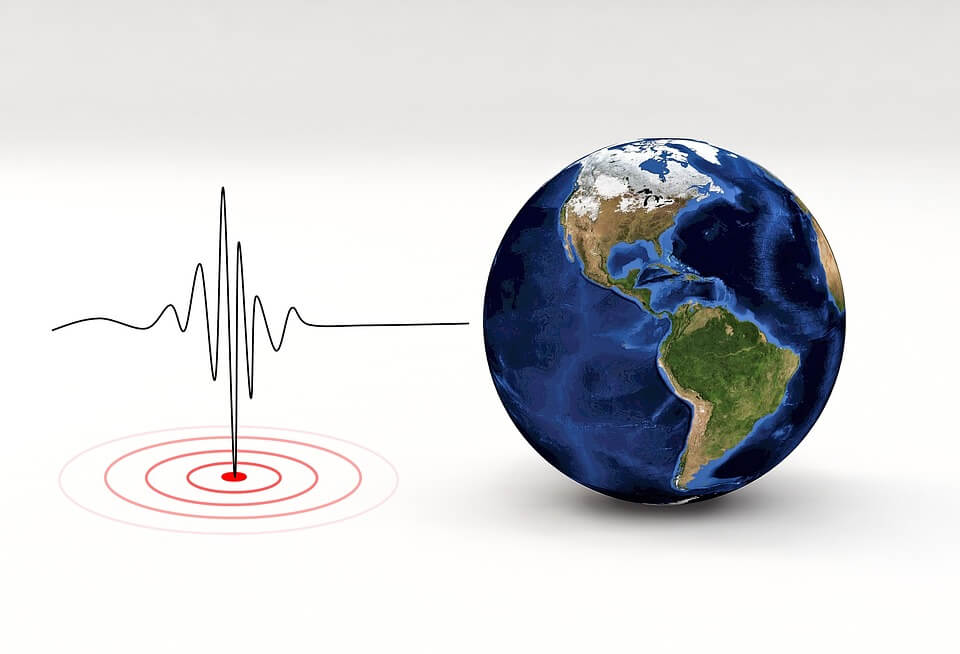What Are The Effects Of Earthquake? How does tsunami occur? Information on tsunamis, quake caused fires, earthquake sounds.

Source : pixabay.com
In regions of considerable ruggedness, landslides are an inevitable concomitant of earthquakes. They are usually of two main kinds: the simple slump, and the avalanche, or rock flood. Either may be extremely destructive to buildings and human life in populated areas.
Abrupt changes in the level of the earth’s surface have been observed at the time of an earthquake. Following a major shock in 1899 in the vicinity of Yakutat Bay, Alaska, it was found that portions of the sea floor had been elevated 50 feet (15 meters). There have also been noticeable horizontal shifts. In the vicinity of San Francisco in 1906, roads and fences were offset by as much as 20 feet (6 meters).
Submarine landslides sometimes have important effects as well. At the time of a severe earthquake in 1929 off the Grand Banks in the North Atlantic Ocean, 12 submarine cables were broken in 28 places by what was believed to have been a gigantic flow of bottom material.
Tsunamis:
Submarine landslides or level changes sometimes disturb the ocean to such an extent that a great wave is started out across its surface. The wave is great in the sense of involving large masses of water and having distances of hundreds of miles from crest to crest, but ordinarily it is much too small to be seen in the open ocean. As it approaches a shelving shore, however, there is usually, at first, a pronounced withdrawal of water from the shore-sometimes so slow as to be like an extremely low tide. Then the water returns. Sometimes it comes slowly, sometimes more rapidly, but in any case, the tremendous energy in the wave piles the water higher and higher until it overflows the land with irresistible force. The great seismic sea waves, or tsunamis, are popularly known as tidal waves, although they have nothing to do with ordinary ocean tides.
One of the greatest tsunamis on record is the one that, on Oct. 6, 1737, broke 210 feet (64 meters) in height on the coast of Cape Lopatka, on the southern tip of Kamchatka Peninsula, Siberia. Severe earthquakes off the Aleutian Islands have caused several tsunamis along Hawaiian shores. Such waves have been known to travel as fast as 350 to 500 miles (560 to 800 km) an hour.
Quake-Caused Fires:
When an earthquake occurs near a modern city, fire is often a much more destructive agent than the tremors themselves in causing loss of life and property damage. If water mains and fire-fighting equipment are rendered useless, the fires burned unchecked. Thus, in San Francisco, the earthquake of Apr. 18, 1906, was estimated to have caused property damage of about $20 million, whereas the fire that followed caused damage estimated at $40 million. In one of the major catastrophes of modern times, the earthquake of Sept. 1, 1923, near Yokohama and Tokyo, Japan, it was estimated that 95% of the property loss came from fire. Tokyo was nearly 50 miles (80 km) from the source of the quake, but fires started simultaneously in over 200 different places and within 48 hours had gutted 65% of the city. Yokohama, a city of 750,000 persons at that time, was burned to the ground.
Incorrect Ideas About Earthquakes:
There are, on the other hand, a number of incorrect notions about what happens during an earthquake. One of the most popular of the old wives’ tales that have survived for centuries is that sometimes the ground yawns open, swallowing people, houses, and whole villages, then closes awesomely and leaves behind no trace. Actually, unconsolidated sands and clays will sometimes be sufficiently shaken to cause them to slump down slopes and leave cracks near the heads of small slides, or to fall away from beneath hard-surfaced roads, which thereupon crack and break up when left unsupported. There is not one single authenticated case, however, of the earth’s solid crust opening into bottomless cracks and swallowing anything. Another popular fantasy that has no basis in fact is that in some way the tremors of earthquakes sometimes bring with them great flashes of fire from the interior of the earth. Such reports have been traced variously to electrical short circuits, meteor swarms, and thunderstorms in the vicinity of the quake.

Source : pixabay.com
Earthquake Sounds:
As an earthquake occurs, there are frequently vibrations in the ground that disturb the air in such a way as to produce sounds within the range of human hearing. These earthquake sounds have been variously described, but they are usually low and booming. Very near the source of an earthquake the sound sometimes includes sharp snaps that suggest the tearing apart of great blocks of rock. Farther away, the sounds have been likened to heavy vehicles passing rapidly over hard roads, the dragging of heavy boxes over the floor, a loud but distant clap of thunder, an explosion, and the boom of a distant cannon. Earthquakes are accompanied by sound in a very large number of cases, if not in all.
As a rule, the beginning of the sound precedes the first shock to be felt, the largest sound accompanies the greatest shaking, and the end of the sound coincides with the end of the shaking. There are many exceptions, but it is difficult to assemble reliable statistics on a phenomenon of this kind. Anyone who has experienced a severe or even a moderate earthquake knows that the confused impressions that result are so mingled as to render uncertain the subsequent attempts to untangle and classify them.